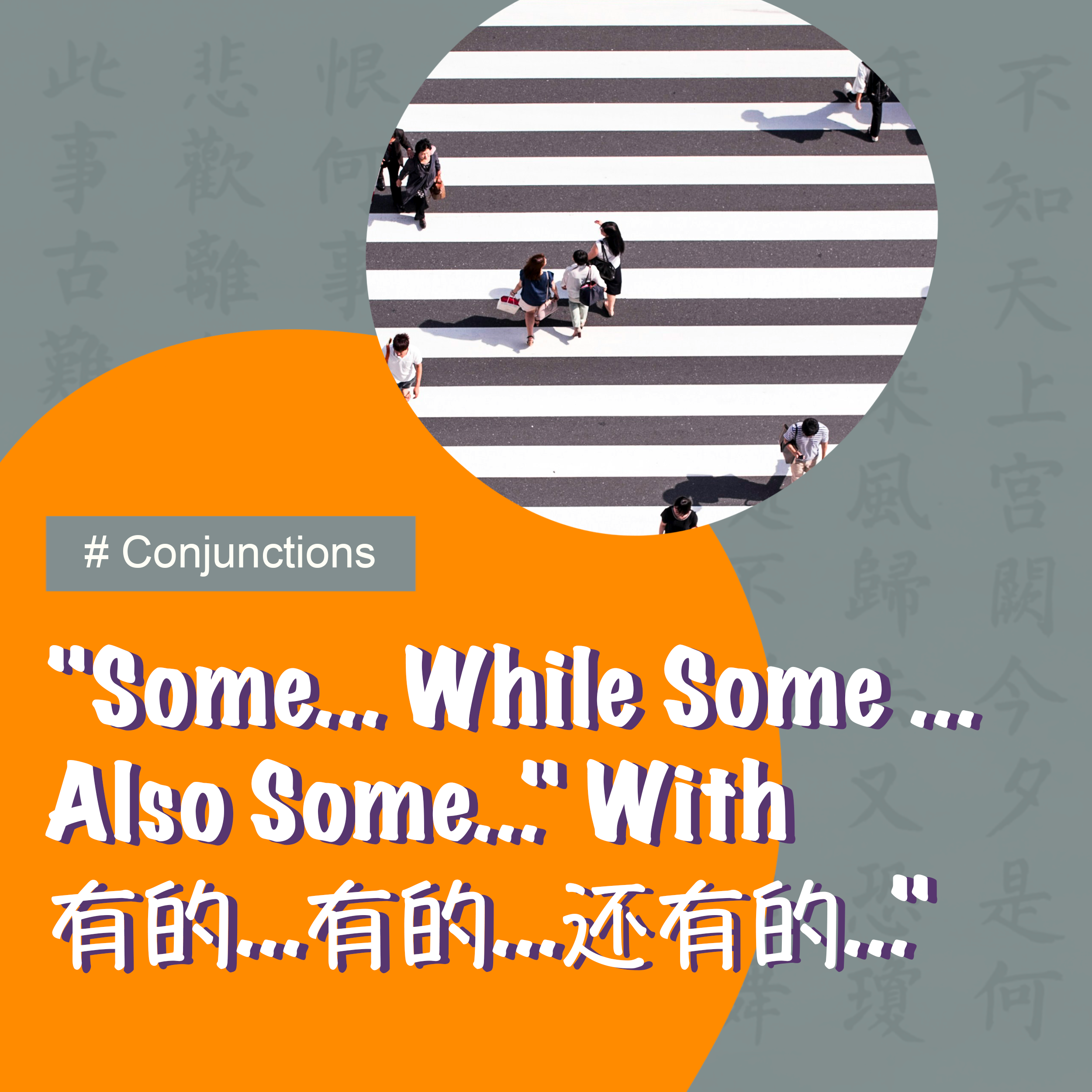"Some... While Some ... Also Some..." With 有的...有的...还有的..."
This structure, 有的...有的... is used similarly to 一边...一边... . 有的 translates to “some” and it allows us to refer to a portion (or ”some”) of a group. This is really helpful if we want to express that there is variety or difference among a group of people. Very helpful for breaking down stereotypes. =)
有的 (noun) + statement, 有的 (noun) + statement, 还有的 (noun) + statement |
|
chúxi de wǎnshàng, yǒude rén zài kàn chūwán,yǒude rén zài bāojiǎozi,háiyǒude rén zài gēn péngyǒu liáotiān. ——> On New Year's Eve, some people are watching the Spring Festival Gala, some are making dumplings, and some are chatting with friends. 除夕的晚上,有的人在看春晚,有的人在包饺子,还有的人在跟朋友聊天。 |
|
Wǒ jīntiān mǎi de shuǐguǒ,yǒude hěntián,yǒude hěnsuān,háiyǒu de hěnkǔ. ——> (Of) the fruit I bought today, some are sweet, some are tart, and some are bitter. 我今天买的水果,有的很甜,有的很酸,还有的很苦。 |
Sentence 2: instead of putting the noun after the verb, it is at the beginning here. It is then implied after each “有的”.
Also, if we want to add a third statement we will use “还有的...” to lead the third statement.


